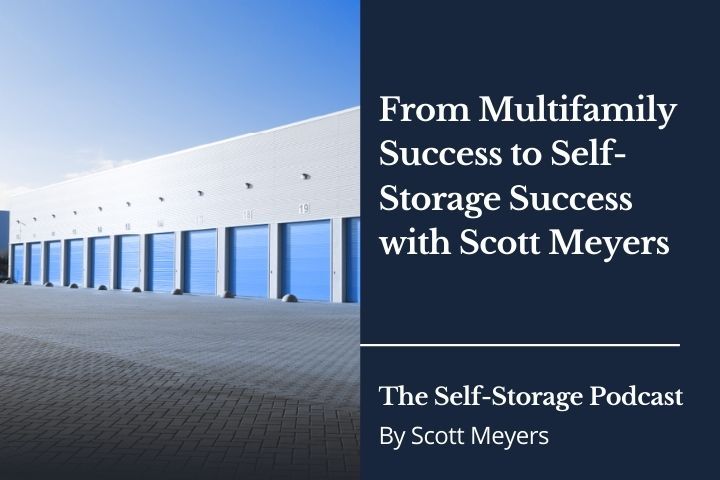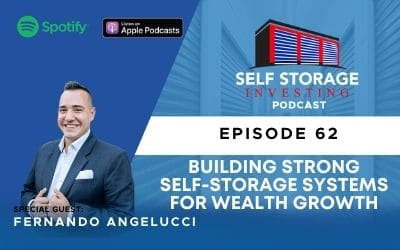For Jonah Hall, the journey into the self-storage industry began in 2017 when he worked for a family office in the oil and gas sector. His initial project involved converting a building into a storage facility, which marked his entry into the industry.
Hall emphasizes the importance of remote management and self-service features in the self-storage business, as these allow customers to access the facilities with ease. He also sees significant potential in conversions and acquisitions in the current market, especially in medium-sized markets.
Hall is optimistic about the increasing role of automation and technology in the industry and believes that they will be crucial for the future of self-storage.
WHAT TO LISTEN FOR
4:57 Technology and unstaffed facilities
12:23 How to adapt to rising construction costs
15:19 Why consistent market outreach is so important
21:06 Technology and process optimization
Leave a positive rating for this podcast with one click
ABOUT JONAH HALL
Jonah is the co-founder of Smartlock Self Storage®. In Garland, Texas, Jonah repurposed a vacant property early in his career. He used a former Dollar General building to test various industry innovations. In October 2020, he co-founded Smartlock Self Storage® with David Hoover. They quickly grew the company. By Summer 2023, they opened sixteen locations with six more underway.
CONNECT WITH JONAH
Website | LinkedIn
CONNECT WITH US
Website | You Tube | Facebook | X | LinkedIn | Instagram
Follow so you never miss a NEW episode! Leave us an honest rating and review on Apple or Spotify.
Episode Transcript
Jonah Hall (00:00):
I think hindsight’s always 2020, right? So we took on a lot of projects as the GC all at once.
Announcer (00:13):
This is the Self Storage Podcast where we share the knowledge and skills from the industry’s leading investors, developers, and operators to help you launch and grow your self storage business. Your host, Scott Meyers, over the past 18 years has acquired, developed, converted and syndicated nearly 5 million square feet of self storage nationwide with the help of his incredible team at Selfstorageinvesting.com, who has helped thousands of people achieve greatness in self storage.
Scott Meyers (00:50):
Hello everyone, and welcome back to the Self Storage Podcast. I am your hostess, Scott Meyers, and in the studio today we have Jonah Hall with Smart Lock Self Storage. Jonah, welcome to the show.
Jonah Hall (00:59):
Thank you. Appreciate it. I’m happy to be here.
Scott Meyers (01:02):
Well, Jonah, we’ve had a chance to chat a little bit recently and I’m glad we were able to turn the videos and the microphones on for Storage Nation to hear as well. So before we go any further and dive into some of the topics that we wanted to get into, why don’t you tell the folks a little bit about your backstory and how you got into self storage?
Jonah Hall (01:19):
Sure, absolutely. Thanks for the opportunity. Jonah Hall. I’m from Dallas, Texas area Garland. To be specific, if you know the Dallas area. I got started in self-storage in 2017. I was working for a family office, an oil and gas family that owned quite a bit of retail real estate and one of their buildings was dark.
(01:40):
And in 2018, that was my first conversion project. It was a blessing obviously, from God to be able to go convert something into storage without any experience on their dime. So I will be forever grateful for that proof of concept that I was able to build with them after we built the first one, which was very much model after the old school version of remote management, the 10 Federals and Storage Express, although they’ve obviously iterated a lot too. We iterated a lot in the technology stack and today we’re doing something quite a bit different. But we knew we wanted remote management. We knew we wanted something self-service. We wanted the customer to be able to help themselves into the storage facility, not just a rental, but an automated move-in was the concept that we were going for. And it really goes back to even when I was with the family office and managing the retail, a common phrase you hear in net lease retail is mailbox money.
(02:36):
We were trying to create mailbox money and sell storage, which has always been a little bit more management intensive than a net lease real estate obviously. And we got pretty close, obviously inner workings, there’s a lot going on still, but from a customer perspective, it is about as simple as it can get. So since then we kind of had a fork in the road moment. We could choose self storage development and go raise money and get into the development game and acquisitions, or we could have gone down the third party management road and we kind of have avoided that so far. We may eventually jump into that as well. But we have raised several different funds and JVs and have a portfolio of about 22 assets today. 15 are open as we speak, maybe 16 as of last week actually. And the rest should be done sometime between now and Q one.
Scott Meyers (03:26):
Well, one of the questions that I had, Jonah is so very familiar with Storage Express, being here in Indianapolis at Jefferson Shreve from the great city of Indiana, I’ve been able to, over the 20 plus years I’ve been in, he started several years before I did and saw his model rolled out before the tech really caught up to it. And he used to have just a ring down phone at his sites and he would go and it was like the bat phone and you go into the site and he had a little area, small little offices on his facilities with a ring down phone and you walk in and you just pick it up and it went to his call center, connected to his call center, and they would rent a unit that way. They would tell the client what unit to go over to.
(04:04):
They would open the door and there was a rental contract in it. They would sign it and then send it back off in a prepaid envelope. So obviously we’ve come a long ways since then. So the thought behind that model, or at least the assumption behind that model for the rest of us in the industry is that okay, he or folks that are running unmanned facilities, they don’t like tenants, toilets, trash, and maybe not necessarily employees, but that you perhaps struggle in terms of occupancy because the kiosk or at his point, maybe even somebody on the other end of the phone, wasn’t going to be able to negotiate as well to get somebody in and they could go down the street. And so you would essentially suffer an occupancy by not having a salesperson in place and replacing that with technology did that. So Jonah, did you find with that business model that you suffered a little bit in occupancy by not having a salesperson in the office versus a kiosk?
Jonah Hall (04:57):
Actually quite the opposite, but hey, props to Jefferson for the innovative way of doing rentals back then. That’s impressive. It was only what, 20 16, 17, 18 that we started seeing online rentals really coming out to where people could take advantage of that even through a site link or whatever. But no, it’s quite the opposite. And the reason for that I think is we’re open. We’re open when everyone else closes their doors. So when we go to a medium-sized market, and I’m using a medium-sized market because there’s no REITs that you’re competing against potentially in those markets, most people close their doors at five and maybe they don’t even open on Sunday at all. I can get half my rentals during those periods of time. And so we’re able to stay full, we’re able to command better rents because we’re actually available when the customer needs us, which is mostly the time after they get off work, not during the middle of the day when they’re all at work and they’re all doing other things well.
Scott Meyers (05:49):
So I wanted to give some people some context to how an unmanned facility works first, but I wanted to go back to a little bit regarding history and where you started and working for a family office. So tell me the point where there was a conscious decision then to look into self storage. You’re in the oil and gas, you’re working for a family office and investing in those asset classes if you will, and looking around the landscape, you could do pretty much anything to invest in. And you landed on self-storage. Can you recall those conversations and what it was that said, Hey, this is a sexy business model that we need to get into. We need to be in self storage?
Jonah Hall (06:28):
It’s interesting because they were actually using the 1031 vehicle to switch out of oil and gas assets and then to retail real estate.
(06:34):
And the reason it was retail is it’s readily available. It’s always on the market. You can always buy a Dollar General or a Walgreens. They’re on the market every day. So that’s what they had a portfolio of and that’s what I managed both from an asset management standpoint and property management to some degree, I think there was an empty building and they said, figure out what to do with it. It was losing, I don’t know, 10, 12 grand in taxes and another eight to 12 grand in insurance every year. And they’re like, let’s do something with this. And I don’t really recall why I thought storage except I had one childhood memory. My mom actually worked in a cell storage office for a while on the weekends and had some friends in the business. I remember it being a cashflow business. And so I was like, well, let’s figure it out.
(07:17):
And at that time, like we mentioned, there were only a couple, truly a couple in the whole country that were doing it well. And so just basically I can copy somebody else that’s not hard. And so our first model was really just a copy of what other people had figured out that had worked. I was not reinventing the wheel on the first one at all.
Scott Meyers (07:36):
At the end of the day, this is, it’s an industry in which there’s a whole lot of innovation anyways. If you try to make your mark on it, it’s pretty straightforward. It’s a simple predictable business model. And again, thankfully for folks like me, I need a simple predictable business model because I’m not that creative when it comes to business, but I sure we can get our processes and our operations down well to compete. But as you’re looking at the landscape right now, Jonah, are we seeing an opportunity again in the marketplace? We’ve just launched a fund that focuses on acquisitions and we also have a smaller fund that is focusing on conversions. And so essentially how you started the business, I’m looking at some of these dark vacant big boxes and then converting ’em and turning ’em into self-storage. Is now the time that you’re looking to do that as well or what are the next steps as we head into this next economic cycle?
Jonah Hall (08:28):
Nobody really has a crystal ball obviously, but if I had to guess, I would say the conversions are going to continue to be around. We see a lot of them. It’s not too hard to find a conversion these days and Covid made sure of that. There’s a lot of vacant furniture stores and grocery stores and things like that that we, we’d like to convert ground up starting to pencil a little bit to be honest. And so we’re starting to look at those. We kind of rule ’em out through 21 and 22, just cost of construction. I couldn’t get ’em to perform it to the same type of returns. And then yes, finally we’re seeing a little bit of acquisitions. I think I put my first one under contract last week in a year and a half because we just turned our full attention over to conversions through that time period when everybody was willing to pay a little too much.
(09:12):
I bowed out of that particular aspect of the business and focused on development.
Scott Meyers (09:17):
Well, I believe we’re finally in that timeframe as of the date of this podcast in which seller’s expectations are now finally caught up to reality and where the market is. And either the brokers have done a good job or they just realize that the appraisers and the lenders aren’t going to give them the valuations that they truly feel that their facility is worth and they’re going to have to settle for what the market is bearing. But development, we’ve seen, I’ve been through three recessions now and I saw what the REITs did the last time around. We were buying everything we could get our hands on in 2009 and 10 and taking advantage of the market, but we saw the bigger players that had the deeper pockets they were developing. And those are the ones, those are the folks that end up cleaning house.
(09:56):
If you can develop during these times right now when there’s less development and there is a glut of storage, then 18 months from now either at C of O or when you begin to lease up and taking advantage of a low interest rate and low cap rate environment, that is the model. So it seems like there’s very few people out there that are looking at that development aside from some of the bigger players. And Jonah, you’re not a large player, but certainly not a small player. So tell us when you came, what were some of the markers in the market itself that said, okay, now’s the time to begin building again?
Jonah Hall (10:31):
Well, it was actually a reaction to the cap rates. I think we had just finished our third property, which was an acquisition value add project, excellent project in mid 2020. And then I had one guy full-time underwriting value add acquisitions, and they just started coming up short, maybe one every other month instead of five or six a month we wanted to make an offer on.
(10:53):
And so we just turned our attention to development. Since then, we’ve kind of made it our bread and butter. We’ve built an entire in-house GC around this concept. And so we’ve got guys that are construction managers and subcontractors and even an architect in-house focused on conversions or adaptive reuse of existing buildings. And that model is very easy to pencil once you know how to do it. It’s very interesting to be able to go look at a footprint and know kind of without even taking a pencil to paper, what kind of revenue you can generate off that property, what you possibly pay for it. And then of course you got to have some construction expertise as well to go assess the roof, the HVAC, anything you’re not planning to replace on day one and need to know what the useful life of that product is and know how long you’ve got before you might need to replace that, put that into CapEx two.
Scott Meyers (11:42):
If you can’t find yield in the marketplace, then the best place to get it is to build it. And so I think that’s when people begin to turn to construction, which we were doing as well. And so what we’ve seen, and tell me if this is true for you as well, Jonah, when we begin constructing it and in penciling out a project, one of the challenges with that or many of the challenges is that we weren’t able to control the rising construction costs and labor costs and all of a sudden we got into contract law with our general contractors a little deeper than we ever had in terms of signing on an agreement and having escalation clauses and everything built into place. What are some of the lessons that you learned that now make you feel more comfortable entering into besides bringing folks back in house?
(12:23):
It makes you feel more comfortable now that you’re not going to be surprised as you get into the middle of a project. Yeah, I think hindsight’s always 2020, right?
Jonah Hall (12:32):
So we took on a lot of projects as the GC all at once. So I’m kind of on the flip side of the thing there from you. I was the one signing onto the GMP contracts and that obviously had a lot of risk in the last couple of years. I think all of ’em are going to come out, all right, most of ’em are going to come out under budget, which is great. But we had a lot of learning curve and we had to get creative. So for example, punchless items were very, very tricky to find in smaller markets, just could not find a GC willing to do $12,000 worth of work, just wasn’t in their wheelhouse.
(13:05):
They had another job in another city that we came a hundred grand, so they were just not willing or they would get to it when they got to it and that wasn’t going to be acceptable for us. So we had to go create our own subcontractor and hire some actual tradesmen to go out there and do anything from floor grinding to installing cameras or whatever. And we kind of learned where we could find the bottle X and fill ’em ourself, fill those chains in the armor and have since brought an architect in house. That took a lot of the timeline down, especially in Texas, the timeline for an architect to do a drawing could take 10, 12, 14 weeks last year and we could turned one around in about a week after closing. And so that really saved us a lot of time and got us into the permitting phase a lot quicker.
Scott Meyers (13:47):
Jonah, one of the challenges that I think we’re facing right now is if we’re looking to expand the footprint where we currently are in a market, because we already have our district managers in place, we’ve got branding and management to marketing hitting those areas, yet we’re bumping into some supply index issues where we begin to see that the markets are becoming a little saturated and oversupplied. How do you go about site selection? Do you just continue to go out farther and farther and find a site that is suitable, that has a low supply index from where you are right now? Or are you essentially market agnostic and you’ll go wherever you can find a piece of dirt that has a great market that is a right behind it that is starving for storage?
Jonah Hall (14:32):
That’s an interesting question because it’s something we’ve learned over time. When we first got started, my way of going about that was we would underwrite market, we’d underwrite certain cities, maybe 20,000 people to 80,000 people was our small market range. And so we underwrote all those markets and decided, alright, these 50 we would be in tomorrow if we could find either the right conversion product or an existing site we could acquire for the right price. And so we sent people out on an effort to go find the local realtors, the local commercial realtor if they had one. A lot of these towns are so small that the realtors do both commercial and residential, but let ’em know, Hey, here’s my buy box, this is exactly what I want in this market. And over time that paid off. It wasn’t instant. Most of the time they would just kind of, okay, thanks.
Scott Meyers (15:19):
Did you reach out every month or so? And then pretty soon they realized you’re real about trying to find something in their market and they start bringing you stuff. And so we were able to find a lot of buildings that way.
Jonah Hall (15:27):
So we’d already underwritten the market in that sense. And those are markets that either had no climate control or less than one square foot per capita of climate and maybe they had a decent amount of non climate, but it was all, or you have to really look at the quality of what’s there, not just the pricing and not just the total square footage, but really what is the quality of what’s available to this marketplace of people because the heads are there, there’s 30,000 people there and there’s 4,000 square feet of climate. It’s not enough for most markets unless the market is shrinking.
(15:58):
We were pretty interested in those kinds of markets. And so that’s where we’ve ended up a lot of markets between 15 and 150,000 people were the tertiary market for most states.
Scott Meyers (16:11):
I wonder as we were at our mastermind last week in Las Vegas and we have folks that are all across the spectrum. We have syndicators who are developers, we have syndicators who are focusing on nothing but value add and conversions and everything in between. And then we have a number of contractors and companies that are builders as well. And as we are at the time of this podcast, we’re in the third quarter and we’re at the tail end of all the fall shows from Vegas to the statewide shows and across all our members that are in our mastermind, it seems to be a mixed bag of responses after they come out of the show.
(16:48):
Some folks said, ah, well this show had nothing but optimism for the industry and everybody is bullish on storage in their building and acquiring. And then another one or another group of folks said, wow, we just got back from this show and it just seems like everybody was really down and walking around with their head hung low and really concerned and pencils down and not buying and not building anything. So do you think that just depends upon perhaps the niche or the area of focus that these companies are in that if they’re building, they’re excited about their prospects and if they’re buying or is it because they’re going into those secondary and tertiary markets like you and finding opportunities there versus the same old tried and true maybe urban infill locations? What’s your take on the whole mixed bag of emotions out there in the marketplace that we’re seeing?
Jonah Hall (17:36):
It’s partially who’s on stage talking. Obviously they’re different people have different opinions on everything. So that’s always funny to go from literally the same event, one talk to the other and hear a very different version of that. But yeah, it’s partially the product type they’re picking too. If you’re looking for value add in urban areas right now, good luck. There’s not a lot of it. I mean you’re going to have a hard time buying in a basis that gives you the upside you want. But that said, and markets that I’ll go into, I continue to find great returns, great yield, and we’re excited. We’re very, very focused on growth right now and really want to grow a big portfolio following the footsteps of some of these large transactions we’ve seen in the recent past. And that doesn’t happen if you’re doing 3, 4, 5 deals a year, you really got to start putting your team to work.
(18:28):
And so now that we’ve got a team large enough to actually source deals and get a pipeline of them, it’s time to go execute. So it’s just a difference of a perspective I guess a little bit. But also because we’re in better markets for yields right now, we’re more excited for the future too.
Scott Meyers (19:04):
It’s interesting. I’ve had the honor and the privilege of being on stage with I think some of the veterans and some of the folks that are very well respected in the self storage communities and after talking for half an hour about this market does a fly over and we are stopped developing over here, we’re not buying over there, we’re not doing anything as they’re stepping off of stage, they’re saying, Hey, how’s your Denver project going where they just said that they were not working in those markets or Dallas or what have you.
(19:30):
So take it with a grain of salt as you mentioned. It just really depends on who’s on stage and what they’re talking about. And I think sometimes it’s a deflection to keep other competitors out of their market maybe or a product that they’re offering.
Jonah Hall (19:45):
I’ve seen a lot of people on stage, they’re offering some sort of mezzanine debt and so of course they want you to go help them acquire more in your market and they act like they’re not interested in your market or something like that. I don’t know. There’s lots of different agendas on stage, so you kind of got to be careful. Yeah, I think as I say, many of these events, you learn more by going out to dinner or lunch or coffee with the folks and having one-on-one conversations and when, as I’ve said from the stage, and I think that holds true.
Scott Meyers (20:11):
So Jonah, our focus right now I think is mostly on speed. We recognize that as you mentioned, you can’t move at 3, 4, 5 facilities per year whether it’s through acquisition, conversion or development. If you’re looking to grow a portfolio and time the market if you will, based upon lowering interest rates and lower cap rates to be able to exit as we talked about. So for you is that trying to grab and build as big a portfolio as possible, how strategic are you being in placing your projects in proximity to one another? What is the overall goal in order to then meet the market where it is to be to exit?
Jonah Hall (20:48):
Yeah, for sure. I want to build something that’s actionable, but I’m also wanting to make sure I build stuff that has good cashflow that if it doesn’t time exactly as we all think it will, that I can coast ride through that and come out the other side of well, so I’m not doing bad projects, but I do agree with you that speed is key.
(21:06):
Sorry, I agree that speed is key. And so we think of it two ways, speed and development or acquisitions, however you want it, acquiring more assets but also speed because of the technology piece that we’re pretty excited about. I think the industry is more and more moving towards this kind of tech and lower margins and being able to compete in different times in different places. So because we’ve got that already sort of in-house, trying to go capture as much and convert it to that as we can. I think here in, I don’t know, I’m not going to give it a timeline, five, 10 years, whatever, there will be a time when if you’re not adopting some of the same tech, you’re just going to get bought by the people who did. And so we want to kind of be ahead of that curve and so we’re working really hard to make sure we’re building a smart portfolio.
(21:53):
Sorry, pun in there, but no pun intended. A smart portfolio to go with our smart lock platform.
Scott Meyers (22:00):
I would agree in gosh, five to 10 years, I believe that unmanned or the utilization of tech in the way that you’re, even if it isn’t the exact way that Smart Lock is utilizing it, that if you’re not adopting, you definitely are going to fall behind. I think several folks have already recognized that you just can’t afford to from, if you want to maximize NOI, you can’t have man hours at a facility any longer. It just doesn’t work. And it’s not just replacing the person behind the desk, but so many other avenues and so many other avenues where tech is affecting and improving the way that we run this business. That is truly the last frontier I think, in terms of innovation in this industry. However, that being said, you came into it perhaps a little definitely later than myself and later than others.
(22:48):
And so fresh set of eyes and maybe even being able to see a little further down the road. What is your take on the industry and where, are there other areas in which you think that it is ripe for innovation or other ways of approaching this business model that you see coming into play in the future?
Jonah Hall (23:04):
That’s interesting. I do find that I have a weird perspective sometimes I think I’m right, but that’s frankly my opinion. Obviously I do find that I tend to look at it a little bit differently because I had no cell stores experience five years ago and I just drank through the fire hose for the last five years. I’ve been able to just take a different approach. I do think the industry is becoming more automated. That’s exciting to me. More technology is going to be good. If you look at every other asset class, they’ve had technology a lot longer from restaurants to hotels to whatever.
(23:36):
And then the other piece of it is it’s still so fragmented. Despite all of this consolidation and aggregation that’s happening, we still have what, half, maybe a little more of the market that’s still mom and pops and small operators. If you count the small operators, it’s still probably well over 60% of the market is just ripe for the taking, if you will. And I think there’s going to be a lot of people in the next few years that are selling for one of many reasons. Obviously their loan could have come due at a really bad time or it could just be an asset passed down to the kids and the kids don’t want to manage it, whatever. There’s going to be a lot of that and I hope to be knocking on a lot of those tours.
Scott Meyers (24:12):
Yeah, we do know that this is one of the last wild wild West frontiers in terms of commercial real estate as you mentioned.
(24:20):
I think one of the stats I’ve seen, depending on how you look at it, 80% is still mom and pop is not REITs. And then bringing closer to that 60% as you mentioned, would then include the regional and national players, but not necessarily the REITs. So unlike all the other asset classes, this is the last of which we were able to see that the greatest opportunity to be able to roll up and then sell off in tranches, if you will, or just build a large portfolio. And so that’s what’s got a lot of people excited about the industry. I’m still very bullish on it and we’re doing the exact same things that you’re doing and going fast and being selective a good deal now is a good deal for later or to sell either way. Just making smart acquisitions and making sure that we’re developing and producing to the market what it is always going to want. So Jonah, that being said, these are very interesting times that we’re in right now and there’s a whole lot about private equity that is pulling back or sitting on the sidelines. There’s a lot of developers, investors that are doing the same thing with the exception of some of the folks like yourself and our organization that are moving forward. But what do you see as perhaps the greatest opportunity maybe in the short cycle now within the next M 12 to 18 months?
Jonah Hall (25:35):
I would say continued refinement of a sort of good business practices. Technology may pay a piece of that, but it’s still a hard time to run a business. And so you got to be good at running this business. It is a business, right? It’s not just a real estate investment. So you’ve got to be good at revenue management, you’ve got to be good at streamlining processes and you’ve got to continue working on that. And then the thing that I’m probably most excited about is I continue to see more capital coming in. You’re right, there are people sitting on the sidelines, but there’s also all this new kind of mid-size, family office, long-term investment visionary kind of capital that’s like, Hey, this is good cash flowing. We should just go build a giant portfolio. And so I’ve met a lot of these people recently and I can just see that there’s a big hunger to take up what I’ve been out there advertising, which is there’s a lot of mom and pops to go buy up and there’s a lot of development to be had in markets that previously you just couldn’t pencil.
(26:30):
But because of technology and better processes and rated team, whatever I’m trying to say, vertically integrated teams, you can take advantage of smaller markets, smaller footprints and still get those same yields and returns. Yep. I would agree a hundred percent.
Scott Meyers (26:48):
Well, Jonah, I appreciate so much you taking time out of the busy schedule of moving fast and growing your portfolio to take advantage of the opportunity we see in the marketplace right now. But before we go, what’s the best place for people to find out a little bit more about what you are doing?
Jonah Hall (27:01):
LinkedIn has been really good. I’m amazed how useful that tool can be. Everything from finding great employees to meeting new people that want to simply ask us a question about what we do or maybe they want to run a deal by us or something. It’s a good place to reach out to me or the team.
(27:18):
So LinkedIn is probably where I would point everybody.
Scott Meyers (27:21):
Jonah, any good books that you’re reading right now or what is maybe that one book that continues to surface on the front of your list that you revisit over and over again that you’d like to share with Storage Nation?
Jonah Hall (27:31):
Sure. Two books, one I’m reading now is Rocket Fuel. I know a lot of people talk about that book, but man, it is an excellent book. And then the one that’s probably been the most impactful, other than maybe the Bible I guess, but the most impactful business book that I’ve ever read was They Can Grow Rich. I try to read it every year or two. It’s amazing how such an old book can have new meaning every time you read it. So it’s an excellent book and I highly recommend it.
Scott Meyers (27:58):
Well, three of my favorites, anything and everything you want to know about business, life, marriage, raising kids, it’s all found in the Bible and Rocket Fuel is fantastic.
(28:06):
We revisit that on a regular basis, my integrator and I, and go through that and have regular meetings to make sure we’re on the same page. And yeah, thinking for Rich is we formed our mastermind just based upon Napoleon Hill and what he has done is his teachings and we follow to the letter what he had brought forth in terms of how to get together with groups of people that are aligned and moving forward together. So yeah, all three great ones.
Jonah Hall (28:32):
Shout out to you on that. It’s funny, I reread, think and Grow Rich just before I went to your mastermind, I don’t know, a year ago or whatever. And it hadn’t clicked until I read that book right before the Mastermind. I was like, oh duh, that’s directly pulled from the book. That’s awesome. So pretty cool. I’m happy to hear that. That’s awesome.
Scott Meyers (28:51):
Yeah, that’s good stuff. Good stuff. Alright Jonah, well with that, once again, thanks so much for your time and looking forward to catching up on round two and we get maybe on the backside of this as the portfolio grows and as rates come down and we’ll see if all came true. Alright, I’m looking forward to it. I’m happy to prove somebody wrong if they vote against me here.
Jonah Hall (29:10):
Thanks Scott, appreciate thanks my friend.
Scott Meyers (29:12):
Good to see you, Jonah. Take care.
Announcer (29:18):
Hey gang, wait three things before you leave. First, don’t forget to follow the Self Storage Podcast and turn on your notification so you never miss another episode. Add while you’re there, please leave us a five star review if you like the show. Second, be sure to share your favorite episodes and more via Instagram and don’t forget to tag us. And lastly, head to the links in the show description and hit follow on Twitter and Facebook to get a front row seat as we grow and scale our business and bring you along with us.















